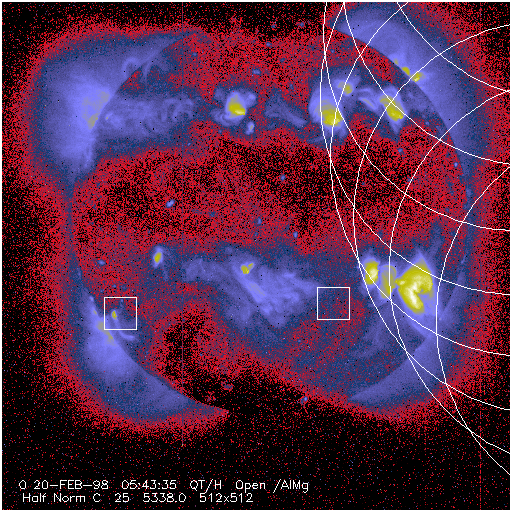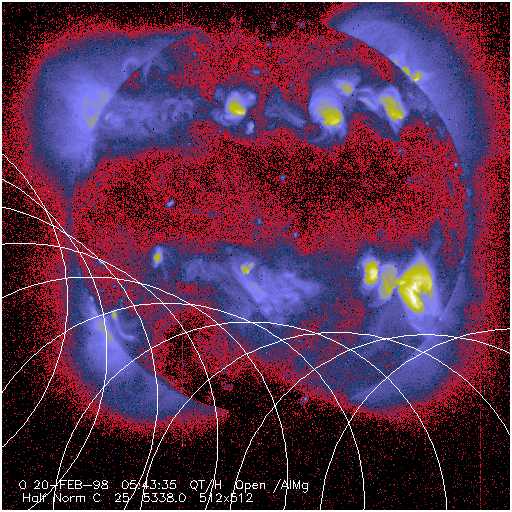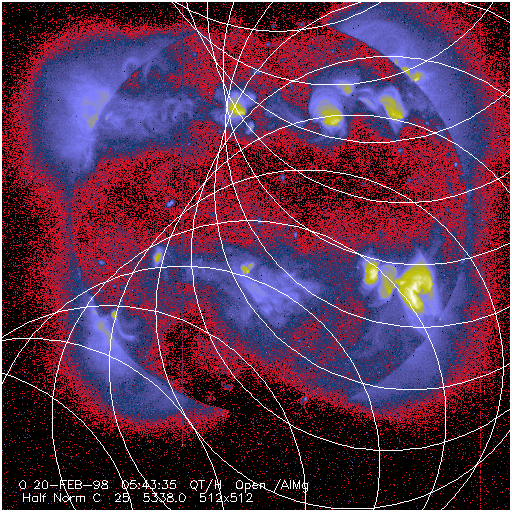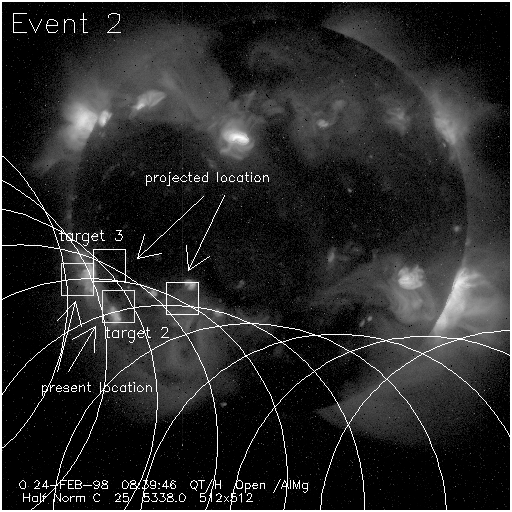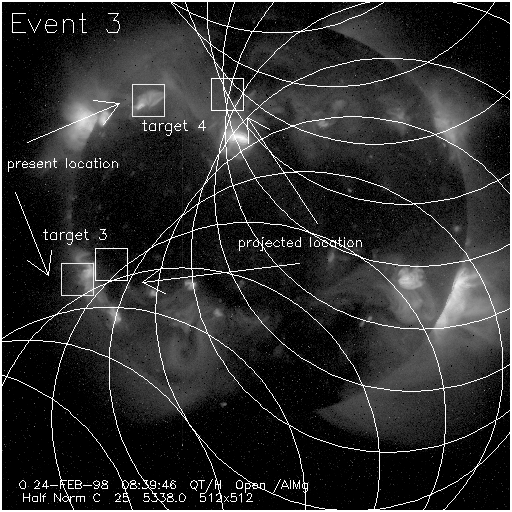Yohkoh planning updates for eclipse of Feb. 26, 1998
Update Feb. 27, 1998
The planning is over! The eclipse is
past! Full-Sun images with a cadence of approximately 32 seconds were
acquired during all three eclipse episodes. Partial-Sun images were
acquired of a small active region just on the edge of the moon's apparent
path. Due to a planning oversight, the resulting cadence of those images
was 10 seconds, rather than the hoped-for 8 seconds. Analysis of those
images will occupy us for some time. Movies of the eclipse episodes
as viewed by Yohkoh SXT are on the web! To view an event, click on
one of the images below. Note: These movies are fairly large
and will take some time to download. They are also available from our
Japanese mirror site.
Added 09-Mar-98: Partial-Sun movie of the
active region target

Eclipse Observing Team: D. McKenzie, H. Hudson, R.
Kano, T. Shimizu, S. Yashiro
Update Feb. 25, 1998
The Sun has provided a few new emerging
active regions, so that we may be able to attempt the grazing-occultation
study. Plotted below are four candidate targets, with their projected
positions at eclipse time.
Note that we can only choose one target for the day's
observations. For Eclipse Event 1, there is one suitably placed target, a
small active region in the north hemisphere. For Eclipse Event 2, we are
looking at two possible targets, both presently near the southeast limb.
Similarly there are two possibilities for Eclipse Event 3: one in the
north hemisphere (marked "target 4" in the image above) and one near the
southeast limb. "Target 4" is very well placed for Event 3, as the moon's
edge is expected to spend about ten minutes within the target region.
However, the region marked "target 3" in the images (above) appears to be
well placed for both Event 2 and Event 3, and so we might expect to get
the most amount of usuable data for that target. The choice is not yet
made, but we are presently favoring "target 3". An additional important
constraint is that as of this writing only "target 1" is bright enough to
provide adequate signal levels at short exposures. Please note that
there is a sizable solar rotation involved here. In the first example
(left above) the small boxes show the size of an SXT partial-frame image
(64x64 pixels) at the current time (left) and after solar rotation to the
time of the eclipse (right).
Update Feb. 20, 1998
The Sun has become quieter, so
it seems less likely that we will be able to do a grazing occultation.
However there are many opportunities in this sequence of eclipse episodes.
The plots below show the three partial eclipses superposed on a current
solar image, about one week before the event.
Eclipse observation team: H. Hudson, R. Kano, D. McKenzie, S. Yashiro
 Return to Yohkoh eclipse page
Return to Yohkoh eclipse page
